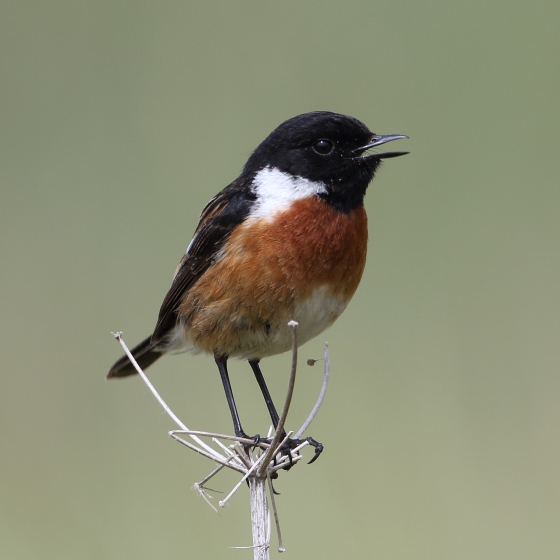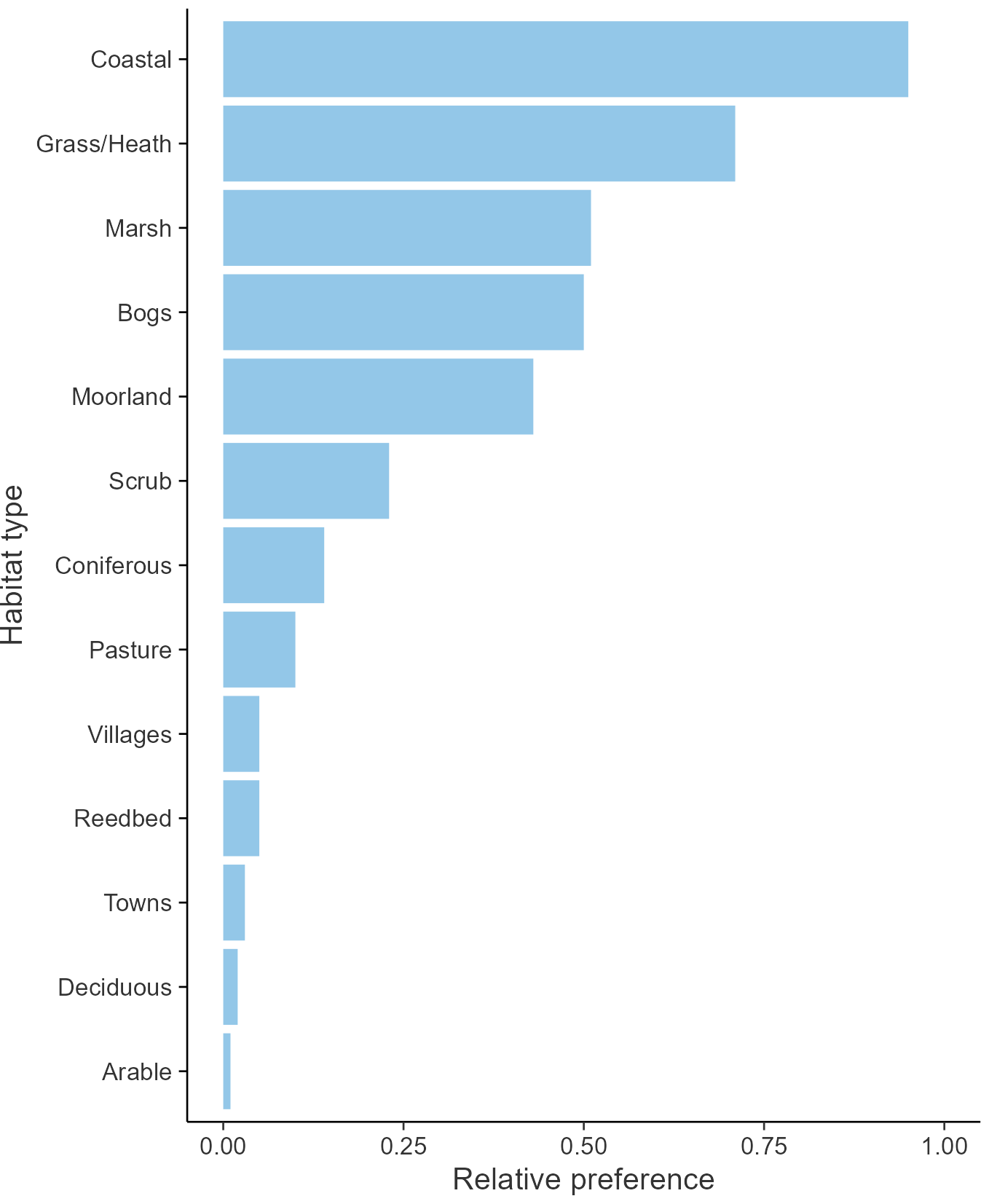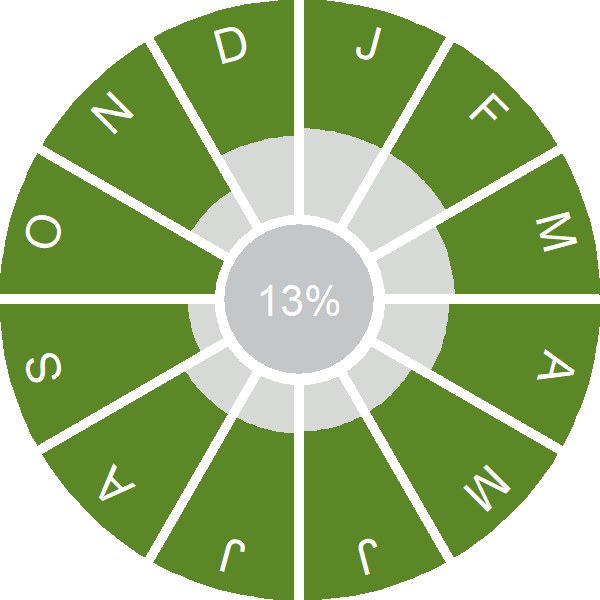Stonechat

Introduction
The Stonechat is a strikingly patterned small chat often seen perched prominently on gorse in their favoured heathland habitat.
This species has undergone dramatic change in distribution over the last few decades. In winter, the species distribution has increased to cover 80% of the UK, whilst the breeding range is creeping eastwards from its western strongholds. The species is found throughout the island of Ireland all through the year, although again western areas form its core range.
Stonechat is a partial migrant, with many birds staying here all year, and some migrating to southern Europe and North Africa. It is thought that a series of mild winters favours those birds that stay behind, and that beneficial habitat changes through early stage plantations enable Stonechats to increase their breeding range.
- Our Trends Explorer gives you the latest insight into how this species' population is changing.

Key Stats
Identification
ID Videos
This section features BTO training videos headlining this species, or featuring it as a potential confusion species.
Stonechat, Whinchat and Wheatear
Songs and Calls
Song:
Call:
Status and Trends
Conservation Status
Population Change
Trends were poorly quantified before the start of the BBS, but a long-term decline is suspected in the preceding decades: severe winter weather, and loss and fragmentation of suitable breeding habitat in many inland regions, are believed to have reduced the population from the 1940s onward (Marchant et al. 1990). Breeding atlas data showed a substantial contraction in the Stonechat's range between 1968-72 and 1988-91 (Gibbons et al. 1993). Against this background, the strongly increasing BBS trend to 2006 represents substantial and possibly even complete recovery. By 2008-11, the earlier range losses had been almost entirely reversed (Balmer et al. 2013). Atlas and BBS data reveal complex shifts recently in the Stonechat's range, involving expansion northward and on the west coast and a detectable increase in altitude (Henderson et al. 2014). In 2012 and 2013, BTO conducted a Wales Chat Survey for Whinchats, Stonechats and Wheatears. Stonechats were associated with a broad mix of herbaceous cover, bracken, heather or shrubs, and the population was estimated at 12,082 pairs (95% CIs: 5,173-22,926), representing a likely increase compared with previous estimates based on different methods (Henderson et al. 2017).
Following increases widely across Europe, the species is now provisionally categorised as 'secure' (BirdLife International 2004) and consequently has recently been moved from the amber to the green list in the UK (Eaton et al. 2009). UK data from about 2008 to 2012 indicate a sharp decrease, however, partly in response to snowy winters during that period. Numbers across Europe have been broadly stable since 1989 (PECBMS: PECBMS 2020a).
Distribution
Stonechats breed in virtually all 10-km squares in northern and western Britain, as well as on lowland heathland in southeast England. In Ireland they breed in almost three quarters of 10-km squares, particularly in the west and along the east coast. Densities are highest in northern and western uplands and on a few lowland heathland areas. In winter they can be very widespread provided they are not impacted by cold weather. During 2007–11 they were recorded in 81% of 10-km squares.
Occupied 10-km squares in UK
2007/08–10/11
or view it on Bird Atlas Mapstore.
2008–11
or view it on Bird Atlas Mapstore.
European Distribution Map
Distribution Change
The Stonechats winter range more than doubled in size from the early 1980s to 2007–11
Change in occupied 10-km squares in the UK
from 1981–84 to 2007–11
or view it on Bird Atlas Mapstore.
from 1968–72 to 2008–11
or view it on Bird Atlas Mapstore.
Seasonality
Stonechat is recorded year-round, reaching 10% of complete lists in autumn.
Weekly pattern of occurrence
The graph shows when the species is present in the UK, with taller bars indicating a higher likelihood of encountering the species in appropriate regions and habitats.

Habitats
Breeding season habitats
Relative frequency by habitat
The graph shows the habitats occupied in the breeding season, with the most utilised habitats shown at the top. Bars of similar size indicate the species is equally likely to be recorded in those habitats.

Movement
Britain & Ireland movement
Foreign locations of birds ringed or recovered in Britain & Ireland
Dots show the foreign destinations of birds ringed in Britain & Ireland, and the origins of birds ringed overseas that were subsequently recaptured, resighted or found dead in Britain & Ireland. Dot colours indicate the time of year that the species was present at the location.
- Winter (Nov-Feb)
- Spring (Mar-Apr)
- Summer (May-Jul)
- Autumn (Aug-Oct)

European movements
EuroBirdPortal uses birdwatcher's records, such as those logged in BirdTrack to map the flows of birds as they arrive and depart Europe. See maps for this species here.
The Eurasian-African Migration Atlas shows movements of individual birds ringed or recovered in Europe. See maps for this species here.
Biology
Productivity and Nesting
Nesting timing
Egg measurements
Clutch Size
Incubation
Fledging
Survival and Longevity
Survival is shown as the proportion of birds surviving from one year to the next and is derived from bird ringing data. It can also be used to estimate how long birds typically live.
View number ringed each year in the Online Ringing Report.
Lifespan
Biometrics
Wing length and body weights are from live birds (source).
Wing length
Body weight
Ring Size
Classification, names and codes
Classification and Codes
- Order: Passeriformes
- Family: Muscicapidae
- Scientific name: Saxicola rubicola
- Authority: Linnaeus, 1766
- BTO 2-letter code: SC
- BTO 5-letter code: STOCH
- Euring code number: 11390
Alternate species names
- Catalan: bitxac comú
- Czech: brambornícek cernohlavý
- Danish: Vestlig Sortstrubet Bynkefugl
- Dutch: Roodborsttapuit
- Estonian: euroopa kaelustäks
- Finnish: mustapäätasku
- French: Tarier pâtre
- Gaelic: Clacharan
- German: Schwarzkehlchen
- Hungarian: cigánycsuk
- Icelandic: Hagaskvetta
- Irish: Caislín Cloch
- Italian: Saltimpalo
- Latvian: tumša cakstite
- Lithuanian: europine juodagalve kiauliuke
- Norwegian: Svartstrupe
- Polish: klaskawka (zwyczajna)
- Portuguese: cartaxo
- Slovak: prhlaviar ciernohlavý
- Slovenian: prosnik
- Swedish: svarthakad buskskvätta
- Welsh: Clochdar y Cerrig
Research
Causes of Change and Solutions
Causes of change
The effect of severe winter weather on survival and changes in productivity could both have contributed to changes, although this is speculative and there is little good evidence available to confirm the most important driver or drivers of the breeding population change in this species in the UK.
Further information on causes of change
Severe winter weather, and loss and fragmentation of suitable breeding habitat in many inland regions, are believed to have reduced the population from the 1940s onward, and severe winter weather is likely to have been an important diver behind the sharp decline which occurred between 2008 and 2011. Nest failure rates fell during the 1990s and clutch and brood sizes increased, coinciding with a period of population increase and suggesting that the changes of productivity could have contributed to the increases. The productivity changes have since been reversed, and there is now no trend in the number of fledglings per breeding attempt.
Information about conservation actions
Numbers of Stonechat have fluctuated and it is not currently a species of conservation concern. The main driver of change is unknown, although the sharp decline between 2008 and 2011 was probably caused by severe winter weather. No specific conservation actions have been proposed to benefit the Stonechat.
More Evidence
More evidence from Conservation Evidence.com
Partners
Citing BirdFacts
If you wish to cite particular content in this page (e.g. a specific value) it is best to use the original sources as linked in the page. For a more general citation of the whole page please use: BTO (20XX) BirdFacts Species: profiles of birds occurring in the United Kingdom. BTO, Thetford (www.bto.org/birdfacts, accessed on xx/xx/xxxx).

